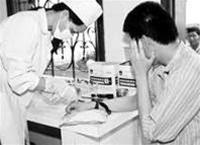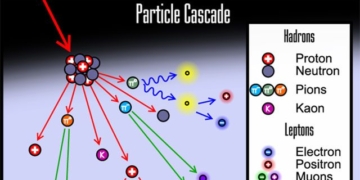Epilepsy (EP) is a very common neurological and psychiatric disorder. According to various authors both domestically and internationally, the prevalence of this condition is around 0.5-0.8% of the population. The World Health Organization classifies epilepsy as a chronic disorder caused by various factors, characterized by the recurrent occurrence of seizures due to excessive electrical discharges of brain neurons, even though clinical and paraclinical symptoms may vary.
Classification of Epilepsy
 |
| Blood test for patients at Hanoi Psychiatric Hospital (Photo: TTO) |
– Focal Epilepsy: Simple focal epilepsy, complex focal epilepsy, and secondary generalized focal epilepsy.
– Generalized Epilepsy: Tonic-clonic seizures, tonic seizures, absence seizures, atypical absence seizures, myoclonic seizures, atonic seizures, and spasms in children.
– Status Epilepticus: Continuous tonic-clonic seizures, continuous absence seizures, and continuous focal seizures.
– Recurrent patterns: Occasional seizures, seizure cycles, reflex seizures (light-induced myoclonic seizures, sensory-motor seizures, music-induced seizures, reading-induced seizures).
Clinical Symptoms
– Focal Epilepsy: Initiated by the activation of neurons in a localized area of the cortex. Clinical symptoms depend on the area of the cortex involved. Lesions may be due to birth trauma or postnatal injury, brain tumors, brain abscesses, cerebral softening, vascular malformations, or structural brain abnormalities.
Focal seizures are classified into: simple focal seizures (no loss of consciousness and awareness of the surrounding environment) and complex focal seizures (with loss of consciousness and impaired awareness of the environment).
– Generalized Epilepsy: Includes tonic-clonic seizures, absence seizures, atypical absence seizures, myoclonic seizures, atonic seizures, and spasms in children. This article will focus on the most common type, which is the tonic-clonic seizure.
– Tonic-clonic Seizures: These are the most common and well-known. The seizure occurs suddenly, with the patient losing consciousness for a short time, followed by tonic contractions, convulsions, and then a state of coma. Hours to days before the seizure, the patient may experience warning signs such as headaches, tinnitus, insomnia, poor appetite, dizziness, personality changes, and irritability towards family members.
Warning signs and brief seizures may not occur, and the tonic-clonic seizure may appear suddenly. The patient loses consciousness, experiences tonic contractions, falls suddenly, sometimes accompanied by a groaning sound due to laryngeal muscle contractions. Due to the force of the fall, the patient may sustain injuries or burns.
Upon falling, the muscles remain in the tonic phase, the patient’s limbs are straightened and stiffened slightly, the jaws clenched, and the tongue may be bitten, causing bleeding. Breathing may appear to cease, the patient’s face quickly turns pale and then cyanotic. The pulse quickens, blood pressure rises slightly, initially the pupils constrict then dilate and lose reaction to light. The tonic phase lasts from 30 seconds to 1 minute.
Following the tonic phase, the patient enters the convulsive phase: skeletal muscles contract and stretch rapidly. Due to the convulsions of the chest muscles, there may be a hiccuping sound, and the patient’s mouth may foam, sometimes with a pink tinge from biting the tongue. The rhythm of the convulsions gradually decreases until it stops. The convulsive phase lasts from 2 to 5 minutes. Coma: after the convulsive phase, the patient enters a state of coma, which may show pathological reflexes, loss of light reflex, and pupil response, along with subcutaneous and ocular hemorrhages.
After the seizure, the patient gradually regains consciousness, initially experiencing disorientation with the environment and amnesia regarding what happened, speaking incoherently, and exhibiting unstable mental states. Sometimes the patient may not regain consciousness but instead fall into a deep sleep, waking up with headaches, fatigue, and generalized body aches. In some cases following a tonic-clonic seizure, due to persistent disorientation, the patient may exhibit unexpected behaviors.
Seizures often occur after overeating, excessive water intake, alcohol consumption, after excessive fear, fatigue, stress, or lack of sleep. Seizures are also common during hot weather or menstrual periods.
Continuous Epileptic States
This state is extremely dangerous for the patient’s life due to phenomena such as cerebral edema, acute pulmonary edema, circulatory and respiratory disturbances. The patient may be lethargic, with a rapid pulse, high temperature, low blood pressure, irregular and labored breathing, dehydration, and electrolyte imbalances. The faster the pulse and higher the temperature, the poorer the patient’s response between seizures, indicating a more severe condition.
Continuous tonic-clonic seizures require immediate emergency treatment. The prognosis is generally relatively good if continuous tonic-clonic seizures occur due to the patient abruptly stopping anti-epileptic medication. The prognosis is usually poor if caused by severe traumatic brain injury, brain tumors, or meningitis. The mortality rate for continuous tonic-clonic seizures is approximately 20%.
Causes of Epilepsy
All seizures are the result of a combination of genetic factors and acquired factors. Depending on the case, one of these factors may dominate.
Acquired factors: prenatal and perinatal factors, which are extremely diverse. The role of perinatal and postnatal factors has significantly decreased compared to prenatal factors due to advances in obstetrics and perinatal care.
Infections of the central nervous system can lead to seizures or epilepsy later in life at any age.
Head injuries: since ancient times, it has been known that a head injury can later develop into epilepsy.
Brain tumors: rare in children and adolescents, tumors account for 10 to 15% of adult and elderly epilepsy cases.
Cerebrovascular diseases: lesions causing seizures in the cortex, post-stroke complications are among the most common causes of epilepsy in the elderly.
Toxic and metabolic factors: Most of these factors tend to cause isolated seizures, associated with a temporary epileptic condition.
Treatment
Epilepsy should be treated as early as possible to completely control seizures, prevent negative effects such as cognitive decline and personality changes, and prevent status epilepticus. Today, comprehensive treatment through medication, surgery, dietary adjustments, lifestyle changes, and rehabilitation has yielded many positive results.
Medication treatment: This is the most common and straightforward form. Recently, this treatment method has seen significant changes due to deeper clinical and paraclinical analyses that help classify epilepsy into various forms responsive to specific medications.
Advances in pharmacokinetics of anti-epileptic drugs allow for safer and more rational use of these medications. Measuring drug concentrations in serum, understanding interactions between anti-epileptic drugs, and their effects with other medications enable physicians to monitor, evaluate, and avoid complications in treatment. The principle is to use monotherapy (one drug) initially at a low dose, gradually increasing it; if ineffective, then switch or combine medications.




















































